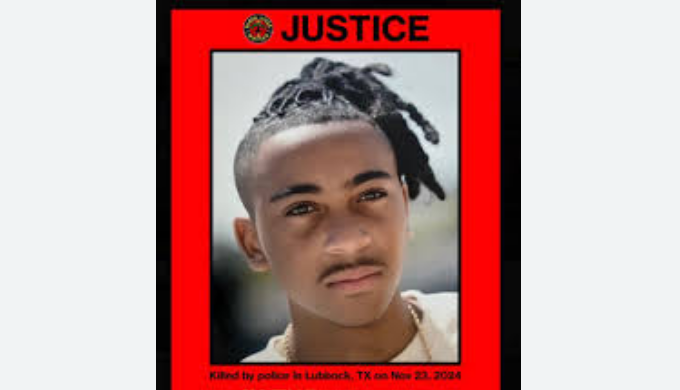Eric Holder
REMARKS BY ATTORNEY GENERAL ERIC HOLDER AT J.O. WILSON ELEMENTARY SCHOOL TO ANNOUNCE FINDINGS FROM EXPANSIVE SURVEY OF STUDENT DISCIPLINE PRACTICES AT AMERICA’S PUBLIC SCHOOLS
Thank you, Secretary [Arne] Duncan, for that introduction – and for your outstanding leadership of the Department of Education.
It’s a pleasure to join you and Assistant Secretary [Catherine] Lhamon here at J.O. Wilson Elementary School – as we discuss the challenges facing America’s young people, and the essential steps that today’s public servants and policymakers must take in order to secure equal opportunities for the leaders of tomorrow. I also want to recognize Acting Assistant Attorney General Jocelyn Samuels, and our team from the Civil Right Division’s Educational Opportunities Section, who work tirelessly to combat discrimination in education.
As the Secretary indicated, we come together this morning at a moment of great challenge – but also great opportunity. The 2011-2012 Civil Rights Data Collection shines a light on many of the obstacles we face in creating constructive, equitable, and supportive learning environments for all of our students. For the first time in more than a decade, the CRDC paints a comprehensive picture by drawing on information from every public school in the nation. And this data shows us that we have a long way to go to ensure that every child has access to the kind of programs offered here at J.O. Wilson. A great deal remains to be done to address the deficit of experience among educators who teach many of our students of color. And some of the racial disparities in the administration of school discipline that are well-documented among older students actually begin as early as preschool.
For instance, African American students made up just under one in five preschoolers enrolled during the 2011-2012 school year. But they accounted for nearly half of all preschool students who faced more than one out-of-school suspension. Nationally, students of color were subjected to suspensions and expulsions at a rate three times higher than that of their white peers. They were far more likely to face referral to law enforcement or even arrest. And although this shocking breakdown reflects a disproportionate impact of school discipline on students of color the divide isn’t purely racial. According to the CRDC, fully three quarters of students who faced disciplinary physical restraint were classified as students with disabilities.
This is astonishing. It’s unacceptable. And it’s important to bear in mind, as we begin today’s discussion, that – as Secretary Duncan noted – these are not abstract statistics. This isn’t a projection, a snapshot, or a rough estimate. The CRDC covers actual, documented disparities in school discipline policies and practices across the country. So every data point represents a life impacted, a future potentially diverted or derailed, and a young man or woman who was placed at increased likelihood of becoming involved with the criminal justice system.
Now, effective school discipline will always be a necessity. Schools must support children as they learn expectations about behavior and conduct. But a routine school discipline infraction should land a student in a principal’s office – not in a police precinct. That’s why the two of us traveled to Baltimore in January to announce a sweeping new set of guidelines aimed at reducing our overreliance on zero-tolerance discipline policies that transform some schools from doorways of opportunity into gateways to the criminal justice system. It’s why we’re working, through our Supportive School Discipline Initiative, to disrupt this so-called “school-to-prison pipeline.” And it’s why this Administration as a whole – led by the Departments of Justice and Education – is committed to doing everything we can to ensure that, as President Obama said in December, “every striving, hardworking, optimistic kid in America has the same incredible chance that this country gave [each of us]” – both in the classroom and far beyond.
As we speak, the Justice Department’s Civil Rights Division is collaborating with school districts and states to ensure that they’re meeting their obligations under federal civil rights laws. Six decades after Brown v. Board of Education, we’re working tirelessly – in hundreds of individual cases – to dismantle racial segregation wherever it’s found. We’re fighting to make sure that students with disabilities are appropriately accommodated, not denied school admission, and provided with the same opportunities to communicate, to learn, and to grow as every one of their peers. We’re vigorously enforcing laws that require school districts to support English Language Learners so they can overcome language barriers and meaningfully participate in school. And we’re striving to reduce abusive behavior against and among students of every age and grade level – by working to protect them from threats, derogatory language, physical violence, and other forms of discriminatory harassment and bullying.
Going forward, our efforts to promote school safety and effective discipline will be guided and informed by the Comprehensive School Safety Initiative – which is managed by the National Institute of Justice, and will allocate $75 million in funding for large-scale research into the causes of school violence, the most effective ways to address it, and the steps we can take to create a comprehensive, data-driven school safety model that can be tailored to individual needs.
This important new initiative will complement work that’s already underway through the Department’s landmark Defending Childhood Initiative and the National Forum on Youth Violence Prevention – which are rallying federal leaders, state officials, educators, private organizations, and community groups to better understand, address, and prevent young people’s exposure to violence. Across the country, these and other broad-based programs are showing tremendous promise in improving our response to this pernicious phenomenon. And thanks to the innovative, Administration-wide “My Brother’s Keeper” initiative that President Obama announced last month, we’re poised to rally a broader coalition to do even more.
It’s no exaggeration to say that America’s future will be defined, and our progress determined, by the doors we open and the support we offer to our nation’s young people. From bolstering early childhood education to promoting youth literacy; from increasing mentorship to reducing juvenile violence; from extending access to social services to expanding employment opportunities – I’m convinced that, so long as we work together, we’ll be able to empower millions of students to pursue their dreams, to achieve their full potential, and to forge the better, brighter futures they deserve.
Now, I recognize – as you do – that achieving these goals will not be easy, and progress will not take hold overnight. But with the continued dedication of this Administration and its partners; with the engagement of advocates across the country; and with the passion of young people like the students here at J.O. Wilson – I am confident in where this work will take us. I thank you all, once again, for the opportunity to be here today. And I look forward to all that we will accomplish together.








